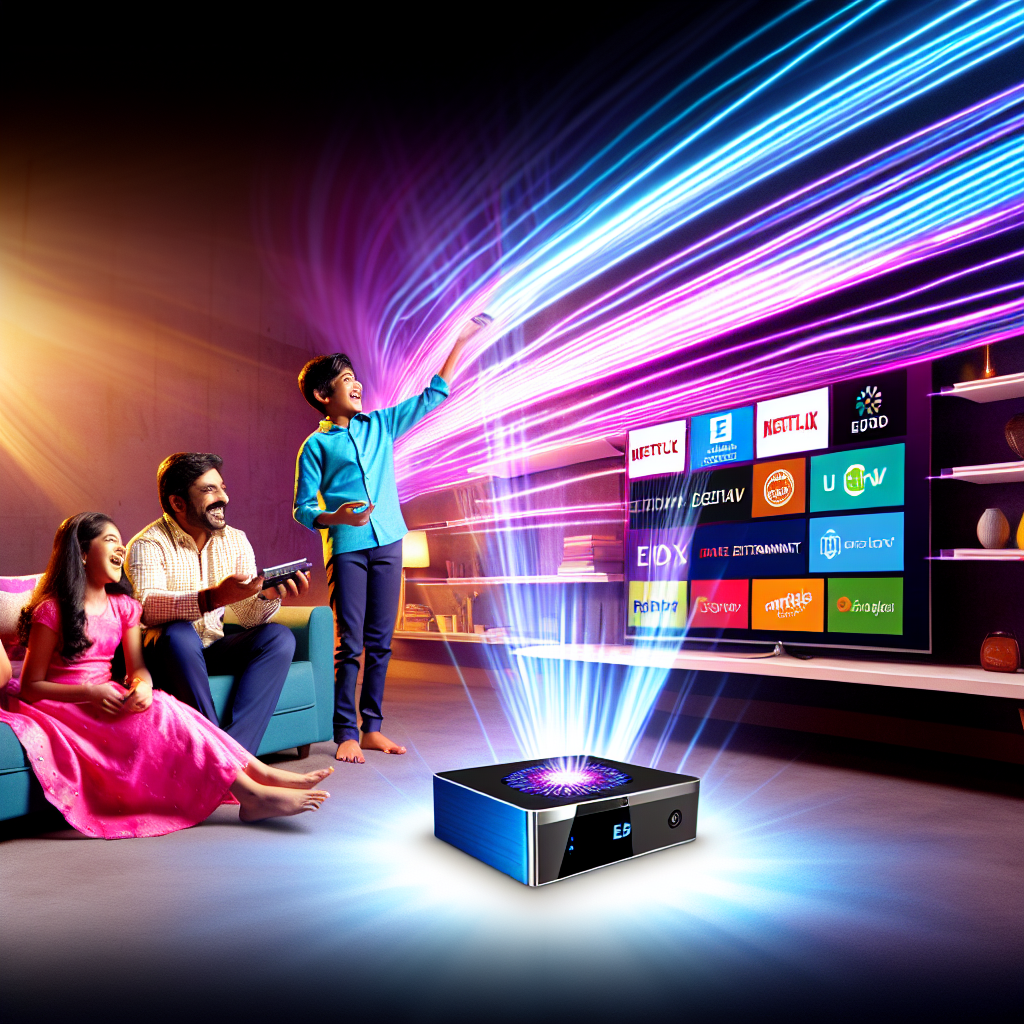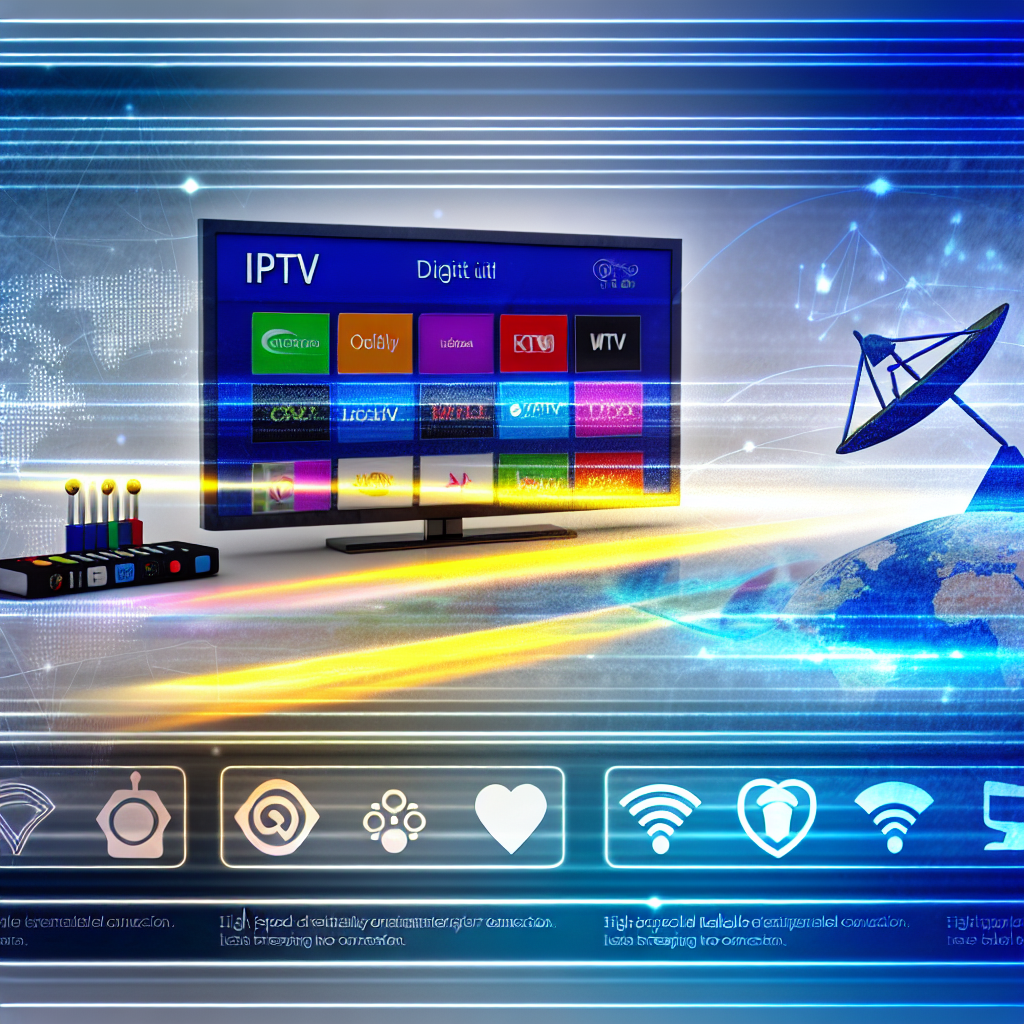In this article, we explore the concept of the IPTV Box: The Future of Home Entertainment Unveiled.
Table of Contents
- What is IPTV?
- Benefits of IPTV
- How Does IPTV Work?
- IPTV Box and Its Features
- Top IPTV Boxes Available
- Setting Up Your IPTV Box
- IPTV in the Market
- Frequently Asked Questions
What is IPTV?
IPTV, or Internet Protocol Television, is a technology that allows you to stream television content over the internet, rather than through traditional satellite or cable systems. In simple terms, IPTV delivers multimedia content, including live TV, movies, and shows, directly to your devices via internet protocols.
Unlike conventional broadcasting, IPTV allows for a more interactive and customizable viewing experience. You can choose what to watch, when to watch it, and how to consume it. This is possible through a set-top box known as an IPTV box.
The convenience and flexibility of IPTV stand out as a significant advantage. You can enjoy a vast range of channels and on-demand content, all from a single device. For more in-depth information about IPTV, visit IPTV.
Benefits of IPTV
The rise of IPTV technology has introduced a plethora of benefits for viewers. Here are some of the most compelling advantages:
1. Cost-effectiveness
Many IPTV services are more affordable than traditional cable packages. With a wide range of available options, you can easily find a subscription that fits your budget without sacrificing quality.
2. Flexibility and Convenience
With an IPTV box, you can watch what you want, when you want. Many providers offer a time-shifting feature, allowing you to pause, rewind, or record live TV.
3. High-Quality Streams
IPTV generally provides a better picture and sound quality compared to traditional cable or satellite TV. Many services also offer content in HD and 4K resolutions.
4. Wide Selection of Channels and Content
From sports and news to movies and niche channels, IPTV platforms boast vast libraries of content. Finding something enjoyable to watch is rarely a challenge.
5. Multi-Device Support
You can use an IPTV box to stream on various devices, including TVs, tablets, smartphones, and computers. This flexibility allows for seamless transitions between devices.
For additional insights, consider checking out this article by Tom’s Guide.
How Does IPTV Work?
IPTV operates using an organized system designed to deliver video content to viewers. Here’s a simplified breakdown:
1. Content Delivery
When you select a show or movie, the IPTV box connects to the internet and accesses the video content stored on external servers. This content is then transmitted to your device using a high-speed internet connection.
2. Protocols and Streaming
IPTV uses specific protocols (like HTTP, RTSP, or RTP) to ensure the content is streamed smoothly. Unlike traditional broadcasting, which transmits data in a linear fashion, IPTV sends data packets over the internet. This allows for more efficient streaming and reduced buffering times.
3. User Interface
The IPTV box typically features a user-friendly interface, allowing you to navigate through channels and content effortlessly. You can search for shows, browse categories, and create lists of favorites.
Overall, IPTV combines the best aspects of broadcasting and internet technology to deliver a more engaging viewing experience.
For related information, make sure to visit TechRadar’s IPTV section.
IPTV Box and Its Features
An IPTV box serves as the gateway to your IPTV experience. Here are some of the key features that make them indispensable:
1. Streaming Capabilities
Most IPTV boxes offer multiple streaming options, from live TV to on-demand content. They can also support various video formats, ensuring compatibility with most video types.
2. Recording Functionality
Some IPTV boxes come with built-in PVR (Personal Video Recorder) capabilities, allowing users to record their favorite shows for later viewing. This feature can significantly enhance your entertainment flexibility.
3. User Customization
Many IPTV boxes allow for personalization, whether through adjustable user interfaces, customizable playlists, or visual themes. This lets viewers create an experience tailored to their specific preferences.
4. Multi-User Capability
For families sharing one IPTV box, many models support multiple user profiles. This makes it easy for each family member to have their favorites and preferences without interfering with one another’s settings.
And let’s not forget about the compatibility with apps like IPTV SMARTERS PRO, enhancing the richness of your viewing experience.
Top IPTV Boxes Available
With numerous IPTV boxes on the market, it’s essential to know which ones stand out. Here’s a rundown of some popular options:
1. Amazon Fire TV Stick 4K
The Fire TV Stick 4K is not just a media streamer; it’s a solid IPTV box supporting various streaming apps. User-friendly and compact, it offers 4K content and comes with Alexa voice remote for effortless control.
2. Android TV Boxes
Android TV boxes like the NVIDIA Shield TV Pro provide flexibility and robust features. They support a broad array of IPTV applications and feature gaming capabilities, making them suitable for various entertainment needs.
3. Roku Ultra
The Roku Ultra excels in simplicity and ease of use. With a vast selection of channels, setting up your account is a breeze. It also offers voice search options to make finding content faster and easier.
4. MAG Boxes
MAG boxes are specifically designed for IPTV services. They come with a variety of features tailored for IPTV users, including multiple network capabilities and a robust interface for navigating channels easily.
Each of these boxes offers unique features that can cater to different viewer preferences and needs.
Setting Up Your IPTV Box
Setting up an IPTV box generally involves several straightforward steps. Here’s how to do it:
1. Connect to the Internet
First, connect the IPTV box to your router via an Ethernet cable or Wi-Fi. Ensure that your internet connection is stable, as the performance of IPTV significantly depends on speed and reliability.
2. Download Required Apps
Most boxes will require you to download specific IPTV applications. Depending on your box, you may need apps like MyTVOnline, Perfect Player, or even IPTV SMARTERS PRO.
3. Enter M3U Playlist or Login
If you have a subscription, you’ll receive an M3U playlist or login credentials. Follow the instructions to input this information into the selected IPTV application.
4. Customize Settings
Once your content is loaded, adjust the settings according to your preferences. You can set up parental controls, choose your language, and arrange your channels.
After following these steps, you should be ready to dive deep into your IPTV viewing experience.
For further assistance with setting up various IPTV options, check community threads on Reddit related to IPTV.
IPTV in the Market
The IPTV market is booming, with an increasing number of services and options to choose from. Here’s a closer look at what’s currently available:
1. Subscription Models
Most IPTV services operate on a subscription model. You’ll have various options, ranging from basic packages to comprehensive ones that offer an extensive range of channels and on-demand content.
2. Free and Low-Cost Options
While many services come at a price, there are free and low-cost IPTV options available. However, these may come with limitations on content quality or available channels.
3. Regional Variants
Some IPTV services focus on specific geographical areas, offering localized channels and content that traditional services might not provide. This can be an excellent option for expatriates or people wanting to watch news from their home countries.
For insights into the available packages and comparisons of various services, the BEST IPTV section can be a great resource.
Frequently Asked Questions
1. Is IPTV legal?
Yes, IPTV is legal as long as you subscribe to services that have the rights to distribute content. It’s essential to choose reputable providers.
2. Can I watch live sports through IPTV?
Many IPTV services offer live sports channels. However, availability can vary based on your subscription and regional restrictions.
3. What internet speed do I need for IPTV?
For smooth streaming, a minimum internet speed of 10-20 Mbps is generally recommended. Higher speeds are ideal for multiple device usage.
4. Will IPTV work in my country?
Most IPTV services are available globally, but certain channels may be region-locked. Always check the service offerings based on your location.
5. How do I troubleshoot buffering issues with IPTV?
Common solutions include checking internet speed, resetting your modem, adjusting video quality settings, or selecting lower resolution levels to ease bandwidth usage.
In conclusion, the IPTV Box: The Future of Home Entertainment Unveiled provides unparalleled flexibility, convenience, and choices for viewers. If you found this article valuable, please consider sharing it with your friends and family. Your engagement helps others discover this transformative entertainment solution!




